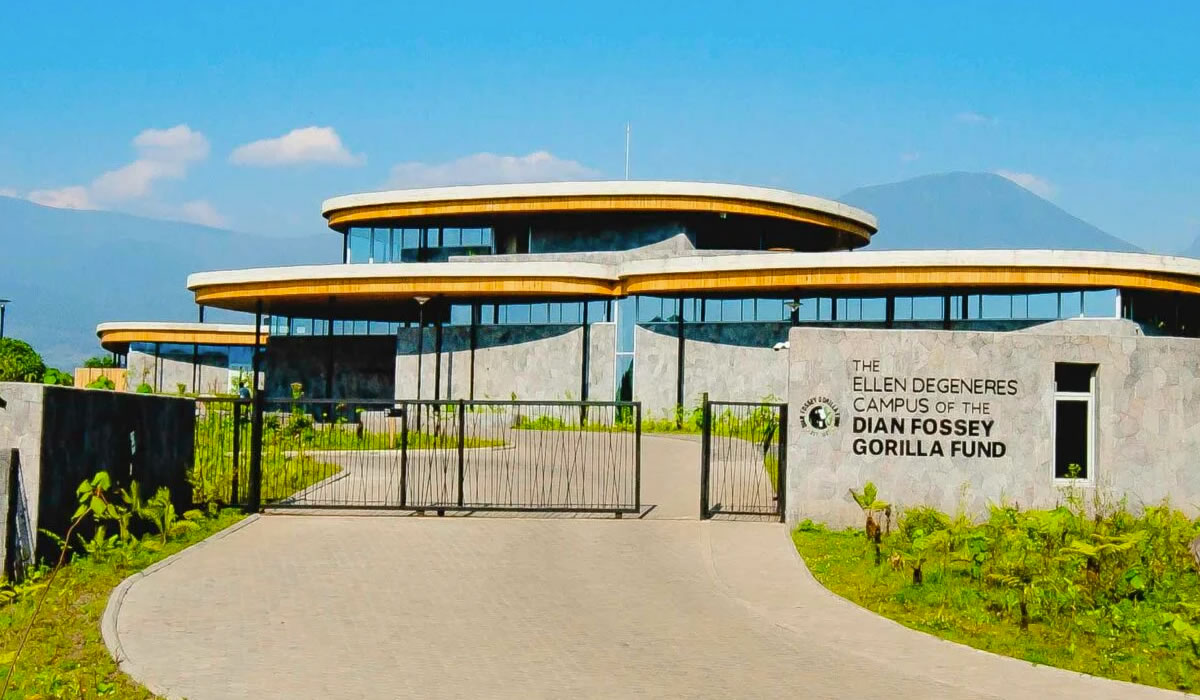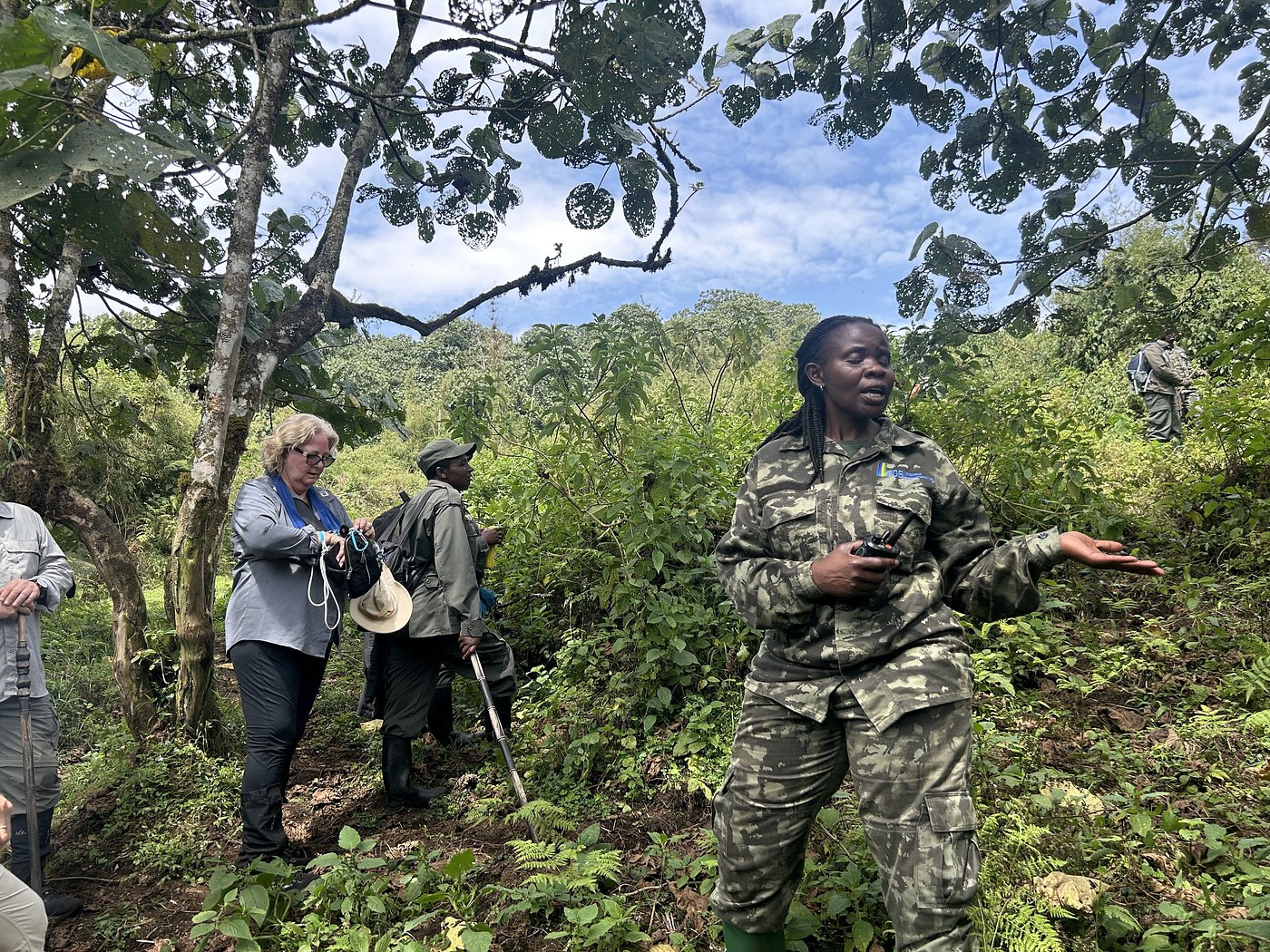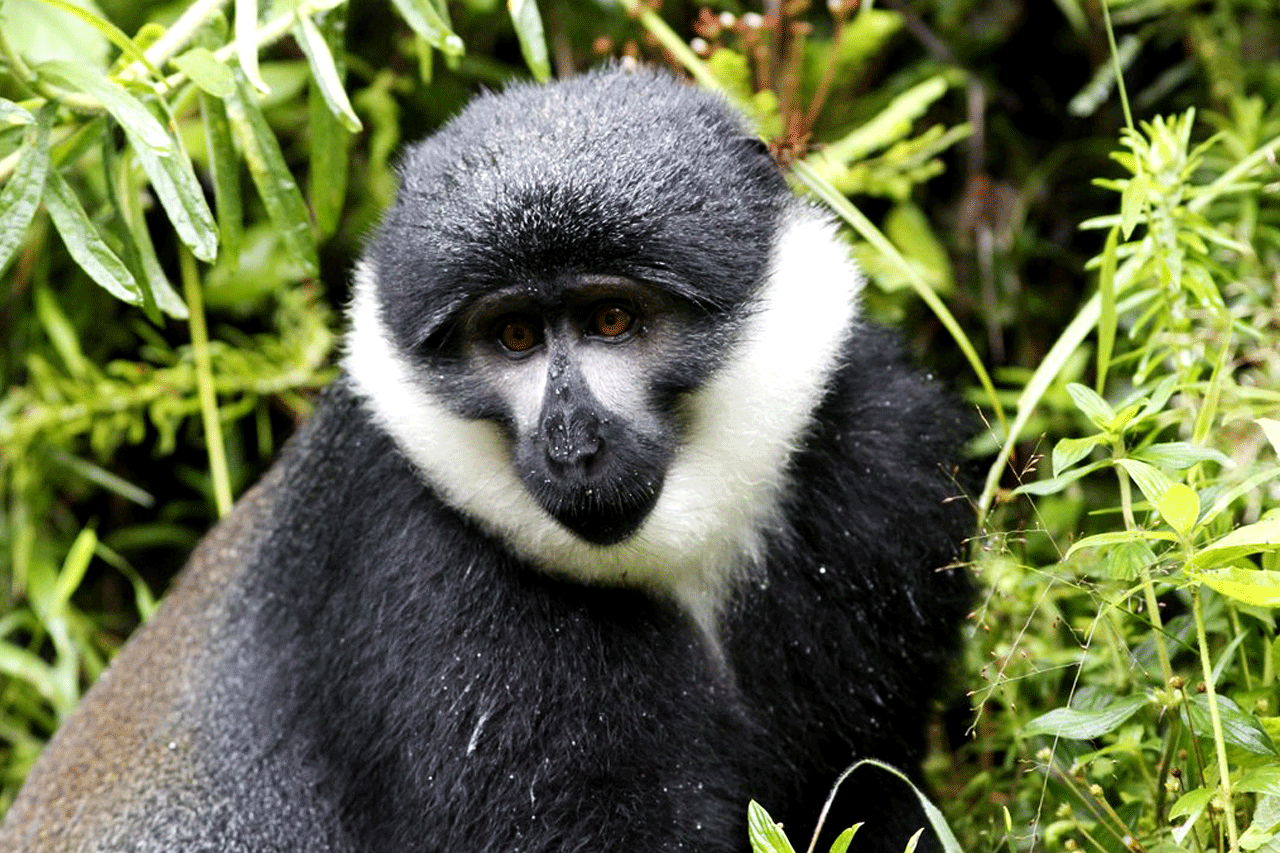Gorilla Tracking Rules in Rwanda – Volcanoes National Park Gorilla Tracking Rules in Rwanda; Gorilla…

Hikes to the Dian Fossey Tomb and Karisoke Research Center
Hikes to the Dian Fossey Tomb and Karisoke Research Center: A Pilgrimage into Rwanda’s Gorilla Conservation Legacy
Introduction to the Dian Fossey Legacy and Karisoke
The hikes to the Dian Fossey Tomb and Karisoke Research Center are among the most emotionally powerful and historically significant experiences available in Volcanoes National Park, Rwanda. These treks go beyond typical wildlife viewing; they are deeply symbolic journeys that honor one of the greatest conservationists in history—Dian Fossey, the woman who dedicated her life to studying and protecting Gorillas in Rwanda. Founded in 1967, the Karisoke Research Center sits nestled between Mount Karisimbi and Mount Bisoke, two of the iconic peaks of the Virunga Mountains. This area, covered in misty forests and volcanic terrain, is the cradle of modern gorilla conservation. For travelers embarking on Rwanda safaris and gorilla trekking, the Fossey hike offers a rare opportunity to understand the profound struggle and victory of saving mountain gorillas from near extinction.
A Historical Sanctuary: Hikes to the Dian Fossey Tomb and Karisoke Research Center
The dian fossey tomb lies at the historic Karisoke site, where Fossey spent 18 years researching and protecting gorillas from poachers and habitat destruction. She fought tirelessly against anti-conservation threats and dedicated her life to understanding gorilla behavior and social dynamics. Her emotional connection to these primates, particularly her favorite gorilla Digit, inspired groundbreaking research and international advocacy. Today, the Karisoke Research Center, although now relocated to Musanze town, still conducts vital fieldwork in this region. The hiking route takes visitors through sections of her original camp, where remnants of stone foundations and research shelters stand as silent witnesses to her legacy. Unlike typical safaris in Volcanoes National Park, this journey is both a memorial and a field-based classroom, where trekkers gain insight into the extraordinary depth of gorilla conservation.
The Hike Experience: Terrain, Trails, and Expectations
The hikes to the Dian Fossey Tomb and Karisoke Research Center begin at the Volcanoes National Park headquarters in Kinigi, from where trekkers meet experienced guides and porters. The trail typically takes 1.5 to 2 hours uphill, winding through dense forest, bamboo zones, and lush vegetation. The route is moderately challenging and involves sections of steep, muddy ground—especially after rainfall. Passing through the habitat of gorillas, golden monkeys, and forest buffalo, the experience highlights the wonderful wildlife in Volcanoes National Park. Trekkers often encounter traces of gorilla nests or distant calls echoing through the Virunga rainforest. At an elevation of around 3,000 meters, the air becomes cooler, and mist often envelopes the forest, creating a haunting, poetic atmosphere reminiscent of Fossey’s writings in Gorillas in the Mist.
A Sacred Encounter: Reaching the Dian Fossey Tomb Site
Upon arriving at the dian fossey tomb, visitors find both solemnity and inspiration. Fossey is buried alongside Digit, her beloved gorilla, whom she mourned as a close companion after poachers killed him. Her epitaph reads: “No one loved gorillas more.” The stone gravesite is simple but powerful, surrounded by moss-covered trees and ferns. This moment often quiets trekkers, inviting reflection on the sacrifice required for conservation. It is here that many visitors understand that gorilla trekking is not just tourism—it is a continuation of a profound mission. By hiking this path, travelers honor the woman whose courage led to the survival of Gorillas in Rwanda, making modern Rwanda safaris and gorilla trekking possible today.
Volcanoes National Park: Habitat of Giants and Biodiversity
Volcanoes National Park is far more than a trekking base; it is a global conservation frontier. Stretching across the Virunga Mountains, it is home to over 30% of the world’s remaining mountain gorillas. But the park is also rich in biodiversity, hosting golden monkeys, black-fronted duikers, bushbuck, and over 200 bird species. The hike to Karisoke gives travelers the opportunity to witness this hidden world—towering Hagenia trees, endemic ferns, and volcanic soil supporting a thriving ecosystem. Many visitors planning Rwanda safaris and golden monkey trekking choose to combine the Fossey hike with other activities such as Golden Monkey Trekking in Rwanda or climbing Mount Bisoke for its breathtaking crater lake.
Mount Karisimbi and Mount Bisoke: Guardian Volcanoes of Karisoke
Between Mount Karisimbi and Mount Bisoke lies the ridgeline that shelters the historic Karisoke site. These two mountains are towering landmarks of the park. Mount Karisimbi, rising to 4,507 meters, is the highest peak in Rwanda and a favorite among adventure trekkers. Mount Bisoke, with its crater lake, offers a more moderate hike, popular among day visitors. For those completing the Fossey trek, these volcanic silhouettes symbolize the raw majesty of the Virunga Massif. Some trekkers extend their journey to summit one of these volcanoes, combining the emotional tribute to Fossey with a test of physical endurance. The closeness of Karisimbi and Bisoke to the Karisoke trail creates a perfect combination of history, nature, and high-altitude adventure.
Golden Monkey Trekking and Wildlife Extensions
While the hike focuses on Dian Fossey’s legacy, many visitors incorporate Golden Monkey Trekking in Rwanda as a complement to their gorilla and Karisoke experience. These playful primates, renowned for their russet fur and energetic behavior, live in bamboo forests of the lower slopes near Karisoke. Observing them adds light-hearted charm to a trip otherwise deeply rooted in conservation reflection. Additionally, those on Rwanda safaris and golden monkey trekking often blend their itinerary with birdwatching, cultural visits, or cave exploration. Volcanoes National Park offers a stunning variety of trails and rare species, making it one of the most diverse trekking destinations in East Africa.
Why the Hikes to the Dian Fossey Tomb and Karisoke Research Center Matters for Rwanda Safaris and Gorilla Trekking
The hikes to the Dian Fossey Tomb and Karisoke Research Center are not merely physical treks but emotional journeys that deepen the understanding of Rwanda safaris and gorilla trekking. Many travelers begin their journey with the thrill of seeing gorillas and end it with a profound respect for the fragile world these primates inhabit. Without Dian Fossey’s scientific dedication and anti-poaching advocacy, gorilla trekking as we know it would not exist. Today, her legacy is carried forward by organizations such as the Dian Fossey Gorilla Fund and the Rwanda Development Board, whose collective efforts ensure that every gorilla permit sold supports habitat protection, veterinary care, and community development.
How to Prepare the Hikes to the Dian Fossey Tomb and Karisoke Research Center: Fitness, Gear, and Conditions
Although less strenuous than a volcano climb, the Fossey trek requires reasonable fitness levels. Proper hiking boots, rain gear, long trousers, gloves, and layered clothing are essential due to variable weather and slippery terrain. Trekkers often hire porters who provide assistance—and more importantly, create valuable employment for local villagers. Conditions on the trail can include mist, mud, and steep slopes, much like the routes used during gorilla trekking. This similarity makes the Fossey hike an ideal acclimatization experience before engaging in a Rwanda safaris and gorilla trekking expedition.
Conclusion: A Pilgrimage of Respect, Reverence, and Responsibility
Walking the path to Hikes to the Dian Fossey Tomb and Karisoke Research Center is not simply an excursion—it is a powerful pilgrimage. It is a journey of remembrance, insight, and profound gratitude to the woman who helped save a species. For travelers who seek not only adventure but meaning, this hike stands as one of Rwanda’s most moving experiences. It bridges science and soul, reminding us that every modern gorilla trek is built upon decades of sacrifice. By taking part in this journey, tourists become participants in a living legacy—one that ensures the Gorillas in Rwanda will continue to walk the forests long after we have gone.





[…] Volcanoes National Park attractions include hikes to the Dian Fossey Tomb and Karisoke Research Center, providing insight into historical conservation efforts. For experienced trekkers, climbing Mount […]